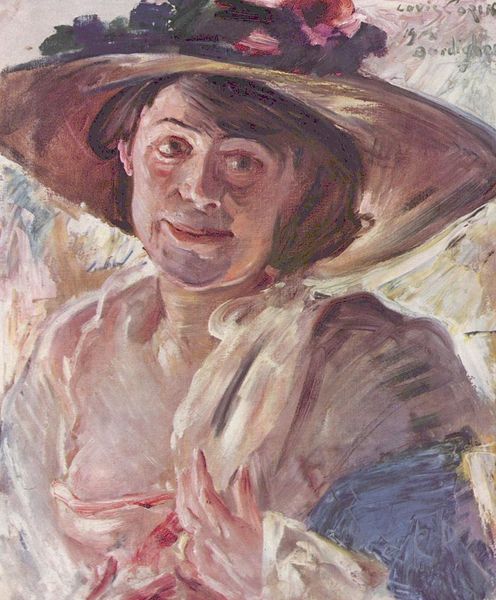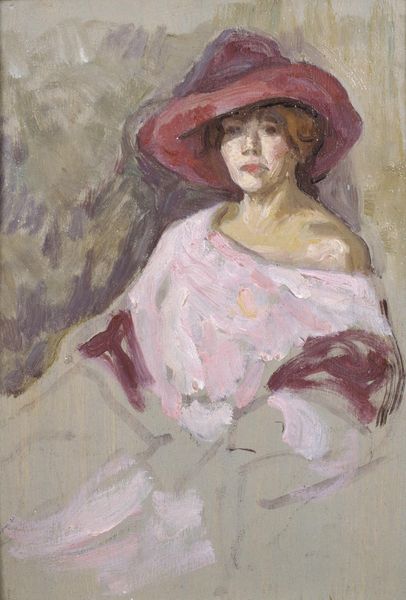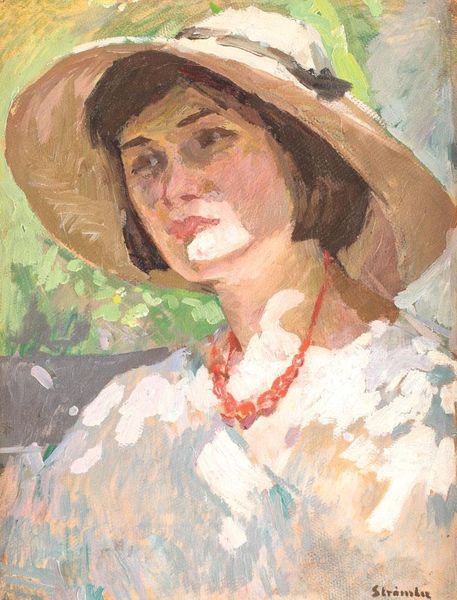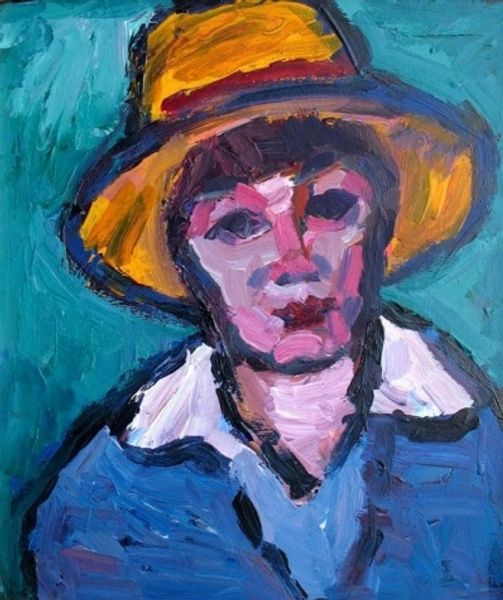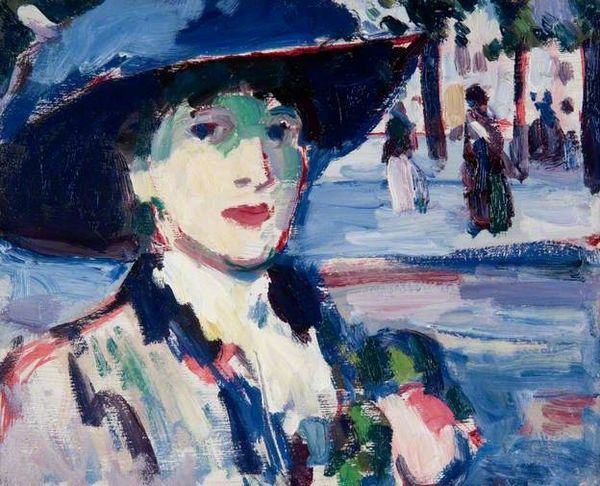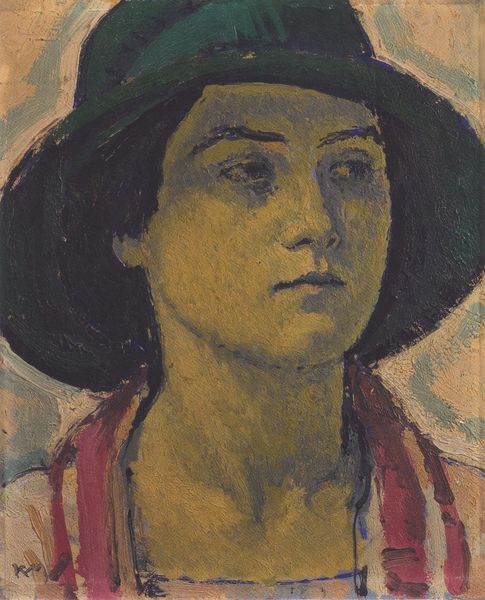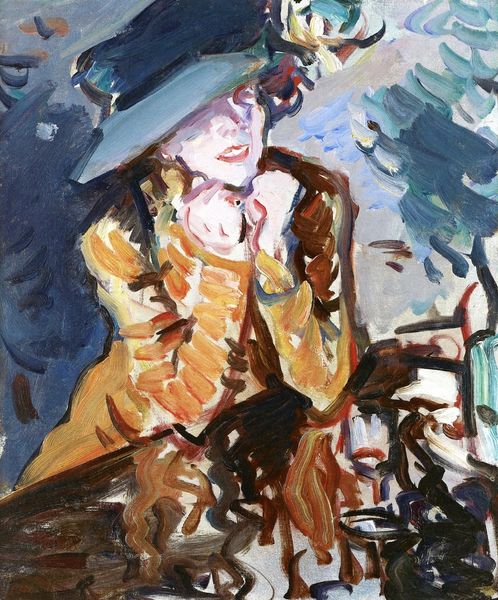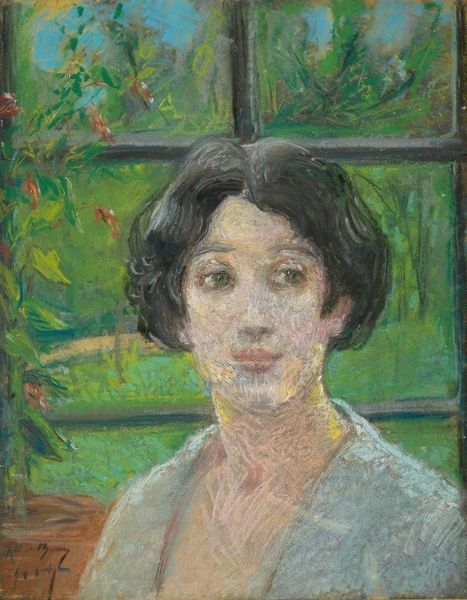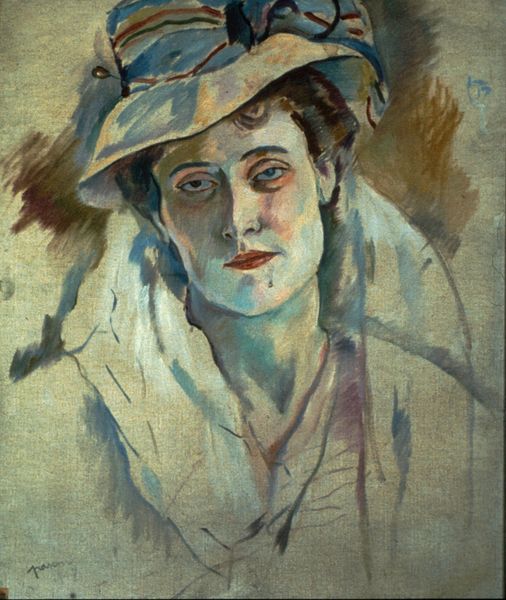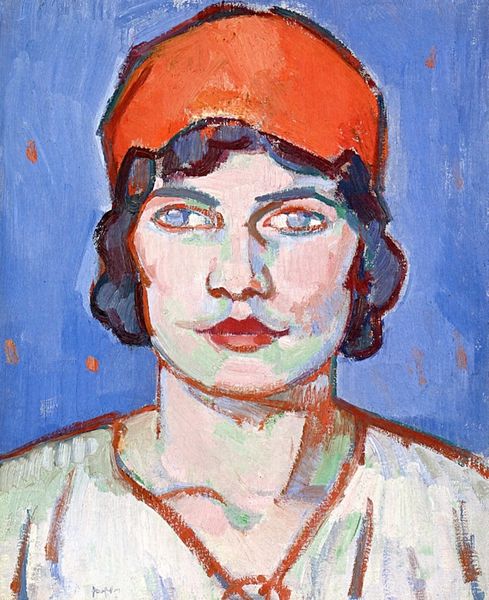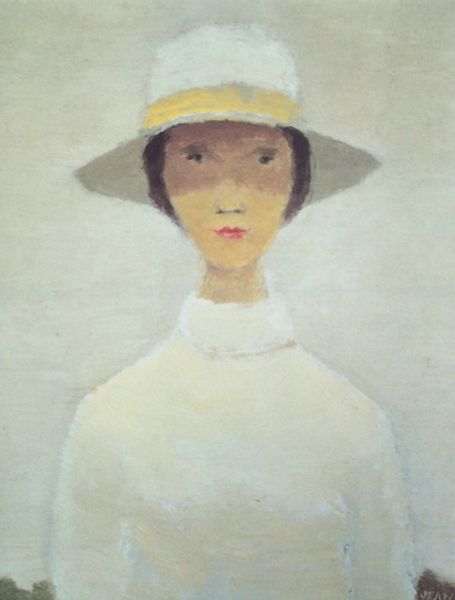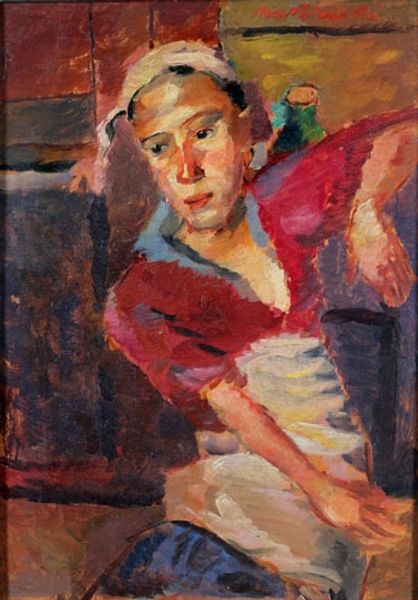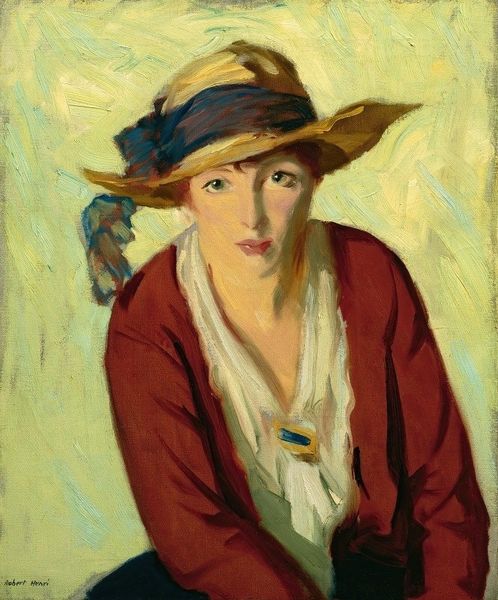
Copyright: Public domain
Editor: Here we have Samuel Peploe’s “Margaret Peploe,” painted in 1911 using oil on canvas. The colours are unexpectedly vibrant. What’s most striking to you about the construction of this piece? Curator: The formal qualities leap out, wouldn't you agree? Consider how Peploe departs from naturalistic representation. Look at the interplay of colors – blues, greens, pinks – applied in short, deliberate strokes. The composition appears almost fractured. It verges into abstraction in its emphasis on color planes over precise rendering. Editor: So, it's more about the arrangement of the colors than creating a realistic likeness? Curator: Precisely. Line and color operate somewhat independently. Notice how the contours of Margaret’s face are defined by colour blocks, not traditional lines. Does this disjunction undermine or, paradoxically, enhance our perception of the subject? Editor: I see what you mean. It does pull your attention towards specific features. The bold hat seems to frame her face, drawing your eye to the splashes of contrasting tones defining her face and hair. What are some ways you feel that emphasis helps? Curator: Peploe prioritizes visual experience, rejecting conventional methods. It's not about "correctness," but rather how he exploits form, colour, and surface. By decentering representational accuracy, Peploe challenges the way we see and, crucially, the way we value art. Editor: Fascinating! I’ve never considered a portrait’s artistic value through its detachment from realistic proportions, as it seems to prioritize composition over representation. Curator: And it is in that compositional space that Peploe provokes a response that surpasses the boundaries of visual interpretation.
Comments
No comments
Be the first to comment and join the conversation on the ultimate creative platform.
